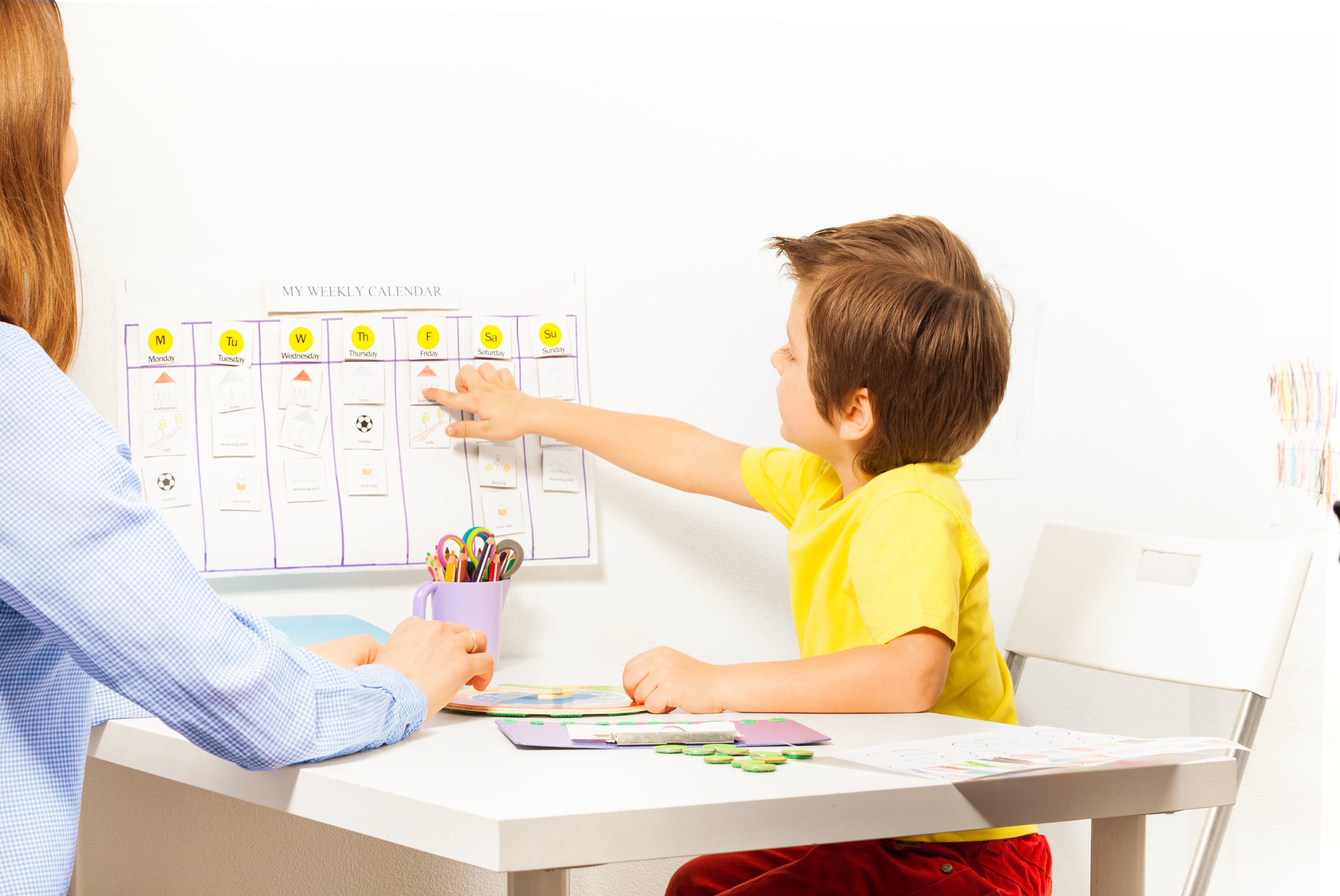My 3-Step Homeschool Planning Strategy
Planning out your year doesn’t have to be scary or stressful.

Believe it or not, even though I am infamous for planning my classes at the Academy down to the pause-for-laugh in my lecture notes, I am actually pretty relaxed about homeschool planning. The thing that helped me most — that helps me still — is to remember that homeschooling is not like defusing a bomb. You do not have a countdown clock flashing in the background while you desperately try to figure out what wires to cut — you have all the time you need, and if you cut the wrong wire, you may have to fix something, but nothing is actually going to blow up.
So with that in mind, I want to talk about the three strategies that I use to plan my year:
I figure out what three things I actually want to accomplish for each kid.
I use love it-leave it-need it lists and make my kids keep them, too.
I plan as we go.
I think it’s important to have a bigger-picture idea of what you want to accomplish because if you don’t, how do you know if you accomplished anything? I say this a lot, but in homeschooling, you have to make your own metrics for success, and I do this every year with my kids. What do I want my kid to have mastered by the end of 3rd grade, or 5th grade, or 10th grade? I limit my list to three things, which means I’m not focusing on every single individual subject every year — we’ll do every subject, but setting these goals helps me have priorities, which helps when the days and weeks are too short to squeeze everything in and when I am tempted to buy ALL THE CURRICULUM. (And I just want to say, about buying all the curriculum, you never stop wanting to do this — people actually send me free curriculum, pretty frequently, to review, and I am still never satisfied. So just know that the curriculum itch does not go away, you can have stacks of curriculum and still want to keep buying more.) Anyway, my point is, priorities help me know where I want to spend my time and money. I usually have a couple of academic priorities — like, I want my son to write a research paper this year, or I want to work on handwriting or taking notes, or something else. But I might have other kinds of priorities, too — like finding friends, building a community, that might be a goal, and I might spend more time driving around or signing up for activities than I normally would in the pursuit of that particular goal.
I have written and talked about my love it-leave it-need it lists a lot, so I will just recap them here: these lists are just what they sound like. Every month, you take a beat and write down all the things that are working great — it might be a whole curriculum or one project or even something like pushing the start time for your day back an hour. Whatever’s clearly A GOOD THING in your homeschool goes on the list. And you write down the things that aren’t going great — it could be curriculum, but it could also be never finishing your daily to-do list or getting out the door to co-op with everybody’s shoes on (why is that so hard?) — anything that’s clearly NOT working. And you make a list of things that you need, because your child has expressed a sudden interest in marine biology or you realize you need to go back and cover grammar or you want a more structured after-lunch routine since your mornings are creeping closer and closer to lunch time. The trick here is to get your kids to make these lists, too, every month — you have to do it every month because otherwise you forget things that aren’t part of the immediate past. These lists are planning gold, y’all — they tell you so much about your homeschool. You can plan a whole year with nothing but these lists to guide you.
Finally, controversially, I do not plan out my lessons or our schedule in advance. Instead of making a list of what I want to accomplish, I keep lists of what we DID ACCOMPLISH. I write down what we did at the end of each day. This is like the most liberating thing ever, you guys. I pick our books and resources and curriculum, and we do a little each day, as much as we want, and then I write it down. We can speed through things if we want to, or we can spend weeks on one lesson. I cannot overstate how this has revolutionized our homeschool — it may not be for everyone, but the minute I stopped trying to plan in advance, my homeschool relaxed and my homeschool confidence rocketed.
These strategies have seen me from kindergarten through senior year, and while homeschooling sometimes got more complicated, my planning method has stayed fairly simple.
A creative learning space is less about actual stuff and more about giving your children space to explore ideas in different ways.
Whether you live to color-code or need a system that flexes and changes with your family’s needs, keeping good homeschool records is essential. And you can do it — all you need is a system that you’ll actually use.
Aminata and Malcolm have discovered that a purposeful morning routine is the perfect start to their homeschool day.
When your homeschool starts to feel like more work than fun, it’s time to make a change.
Jenn’s been struggling to find a balance between the structure and academics she needs and the fun, laidback vibe she wants her homeschool to have.
If your homeschool schedule isn’t making your life happier, easier, and more productive, isn’t it time to change things so that it is? Beverly has some great tips for creating a homeschool schedule that works for you.
Planning your homeschool year is about more than just making a weekly checklist or figuring out what to use for science. If you want your homeschool to grow with you and take your kids where they want to go, keeping these questions in mind can help you stay on track.
The best way to plan your homeschool year is the way that works best for your particular homeschool — and like all the rest of homeschooling, it may require some trial and error to find the right balance. That’s why our “perfect” planning method is adaptable as you need it to be: Use the skeleton to make a loose frame for the year, or go all out and plan every week in advance. It’s your homeschool. Make a plan that works for you.
A homeschool retreat can be inspiration, direction, and sanity saver all in one — and if you don’t have a secular homeschool conference nearby, you can create your own.
Chances are, you’re doing better with this whole homeschool thing than you think you are. These six signs are all indicators that you’re on the right track — and we think that’s something you should celebrate.
5 surprising ways to build a homeschool life that works for your whole family — including you. “If your homeschool isn’t giving you personal satisfaction most of the time, something needs to change.”
It’s easy to get so caught up in your everyday to-learn lists that you lose sight of the bigger picture of what you want your homeschool life to feel like.
Reinventing your homeschool is just part of the process, but this six-step process will help your homeschool grow in the ways that work best for your family.
Your official last day of school can be whenever you want—so pick a date that matches your family’s homeschool rhythm (or don’t pick a date and have a year-round homeschool).
Truly, the biggest hurdle to cobbling my own history curriculum together has been organizing the resources in such a way that I know where they are, I remember all of the ideas that I had, and I don’t leave anything out.
This easy organization method won’t stress you out and will make your life a whole lot easier when you start working on transcripts and other official paperwork for high school graduation.
Planning out your year doesn’t have to be scary or stressful.
February 11 is National Clean Out Your Computer Day, but do you really need an excuse? Get all those curriculum plans, worksheets, and other great ideas organized so you can find them when you need them.
What you can do is engage in the process of putting the spark back in your homeschool exactly the same way you started your homeschool in the first place: with patience, trial and error, and a little expert advice to get you started.
When you get that stuck-in-a-rut feeling — and we all do sometimes — these simple-to-pull-off changes can make your homeschool feel bright and shiny again.
Don’t let the fact that intersectional homeschooling is a work in progress deter you from making it part of your own homeschool.
“We loved the idea of living without a schedule, but we quickly discovered that we were miserable living without a routine.”
This is my go-to recommendation for new homeschoolers — it's designed to help you find your rhythm, build comfort with leading your students’ learning, and keep the learning going as you find your way. It’s basically a six-month, low-cost-investment guide to starting homeschooling.
We rounded up our readers' best tips to prepare for back-to-school.
A more rigorous homeschool involves pushing further and deeper across the curriculum.
Happiness comes more from our actions than our circumstances: about 40 percent of the average person’s happiness comes from things they do. So to get out of a rut, do something different. It’s almost too easy.
One of the most effective ways to feel happier and more productive? Working with your hands. Winter is the perfect time to start a new project.
You don’t have to do huge renovations to make your learning spaces feel brand new. Here are a few simple ideas that will breath new life into your school space this winter.
Sometimes when you feel stuck, setting a series of goals can help you break out of the blah.
In this five-part series, we’re helping you get through the midwinter slump in your homeschool. First up: Give your routine the boot, and try something new.
Amy Sharony is the founder and editor-in-chief of home | school | life magazine. She's a pretty nice person until someone starts pluralizing things with apostrophes, but then all bets are off.































AMY SHARONY is the founder and editor-in-chief of home | school | life magazine. She's a pretty nice person until someone starts pluralizing things with apostrophes, but then all bets are off.